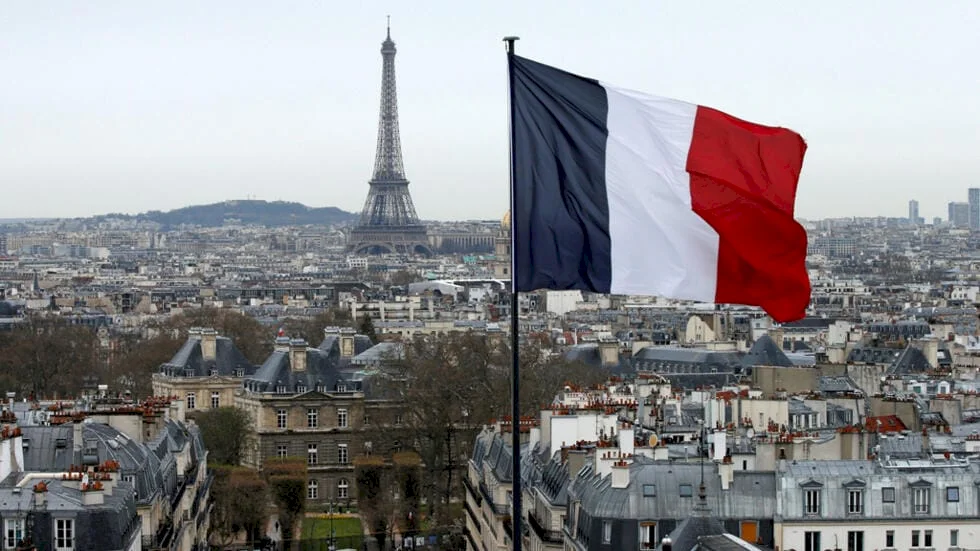It was the kind of image people in Britain hoped they would never see again.
During his murderous rampage at Manchester’s Heaton Park Hebrew Congregation Synagogue, the attacker appeared to be wearing a suicide belt.
When the attack unfolded, it was unclear whether the device was viable. We now know that it was not. Belts containing real explosives are rare in British attacks – Salman Abedi, one of the Manchester Arena bombers who killed 22 people in 2017, wore one – but fake devices are much more common. They have become a grim Islamic State (Isis) calling card.
Advertisement Advertisement
Advertisement Advertisement
That such an image has re-emerged on British streets will inevitably stoke fears of a new wave of terrorism after years of relative calm.
The Manchester attacker was pictured at the scene of the incident wearing what appears to be a suicide belt
Fake suicide belts were worn in some of the most lethal attacks of the past decade: the London Bridge and Borough Market stabbings of 2017, when eight people were killed; the 2019 Fishmongers’ Hall attack by Usman Khan, in which two died; and the 2020 Streatham stabbing by Sudesh Amman.
The belts serve more than a theatrical purpose. They spread terror, complicate police responses – officers must assume detonation is possible at any moment – and can be part of a “suicide by cop” strategy.
They also carry symbolic weight. In jihadist propaganda, the belts are ubiquitous, functioning as a badge of loyalty to terror groups.
Advertisement Advertisement
Advertisement Advertisement
“It is more about jihadi branding than about serving an operational purpose,” as one Western counter-terrorism official puts it.
The Manchester synagogue attacker’s choice of weapons – combining a stabbing with vehicle ramming – was equally familiar. Both tactics have become hallmarks of jihadist violence in Europe.
Intelligence officials fear the attack is unlikely to be a one-off. A raft of data suggests the global terror threat is now at its highest level in seven years.
In 2024, incidents were recorded in at least 66 countries, the most since 2018, according to the Global Terrorism Index compiled by the Sydney-based Institute for Economics and Peace.
Advertisement Advertisement
Advertisement Advertisement
Most attacks take place outside the West, but there are mounting signs that Europe is once again in the crosshairs of Islamist extremists and their sympathisers.
Terror incidents across the continent doubled last year to 67, claiming 25 lives. That remains far below the 2016 peak, when 362 attacks killed 736 people, but the upward curve has alarmed security services.
b'
0310 Terror attacks in the West are still down on mid-2010s
'
British intelligence has long worried about the return of jihadist violence. They have tracked suspected sympathisers travelling to Somalia and Yemen to join al-Qaeda and Isis affiliates.
Yet the greater threat lies at home, with “lone wolf” attacks – many of them perpetrated by teenagers radicalised online – rising steadily.
Advertisement Advertisement
Advertisement Advertisement
Across the West, a striking proportion of recent plots have been carried out or attempted by children.
Official data show that one in five terrorism suspects arrested in Europe is legally a minor. Many cite Isis propaganda as inspiration.
In Graz last year, Austrian police detained a 14-year-old girl of Montenegrin origin who allegedly planned to attack “non-believers” in the city with an axe and a knife. Investigators found Isis propaganda and execution videos on her devices.
In Vienna, another 14-year-old was arrested for targeting a city railway station, while foiled plots to attack Taylor Swift concerts in the Austrian capital involved suspects aged 17 to 19.
Austrian police watch Taylor swift fans in Vienna in August 2024. The singer’s concerts were the target of failed terror attacks - AP Photo/Heinz-Peter Bader
Though there is no suggestion that the Manchester attacker was young, experts say the case reflects a broader trend of extremist groups grooming vulnerable misfits.
Advertisement Advertisement
Advertisement Advertisement
Online radicalisation has migrated from mainstream platforms to fringe networks, gaming forums and the dark web, where algorithms and echo chambers funnel the disaffected into violent content.
By far the most potent force remains Isis itself. Stripped of the heartlands it once terrorised in Iraq and Syria, the group has reinvented itself as a constellation of semi-autonomous regional franchises answerable to a shadowy central leadership.
Last year, it was responsible for 1,805 killings across 22 countries – more than any other terror group.
b'
0310 Islamic State accounts for a greater share of terrorism deaths
'
Its leader, Abu Hafs al-Hashimi al-Qurashi, the fifth “caliph” to lead the group since its founding in 2004, is a ghostly figure whose identity, background and whereabouts remain unknown. Some intelligence officials believe he may be operating out of Somalia.
Advertisement Advertisement
Advertisement Advertisement
The group’s bloodiest campaigns last year were in Syria and the Democratic Republic of Congo, but its fastest growth is in the African Sahel, where Russia-backed juntas have largely forced out Western forces. Isis-Sahel is thought to have sextupled in size since 2018, with as many as 3,000 fighters.
The largest and most aggressive affiliate, however, is Isis-Khorasan (Isis-K). Founded in Afghanistan, it now recruits heavily from Tajikistan, Uzbekistan and other parts of Central Asia. It has demonstrated its reach with high-profile attacks abroad, including the Moscow concert shooting last year that killed 154 people.
Isis-K has also inspired European recruits. It radicalised the teenagers behind the Taylor Swift concert plot, encouraging them to pledge allegiance on its Telegram and using the social media app to supply them with encouragement and bomb-making instructions.
Broaden your horizons with award-winning British journalism. Try The Telegraph free for 1 month with unlimited access to our award-winning website, exclusive app, money-saving offers and more.
[SRC] https://www.yahoo.com/news/articles/suicide-vests-ramming-attacks-fit-171344190.html
 Visit the website
Visit the website







